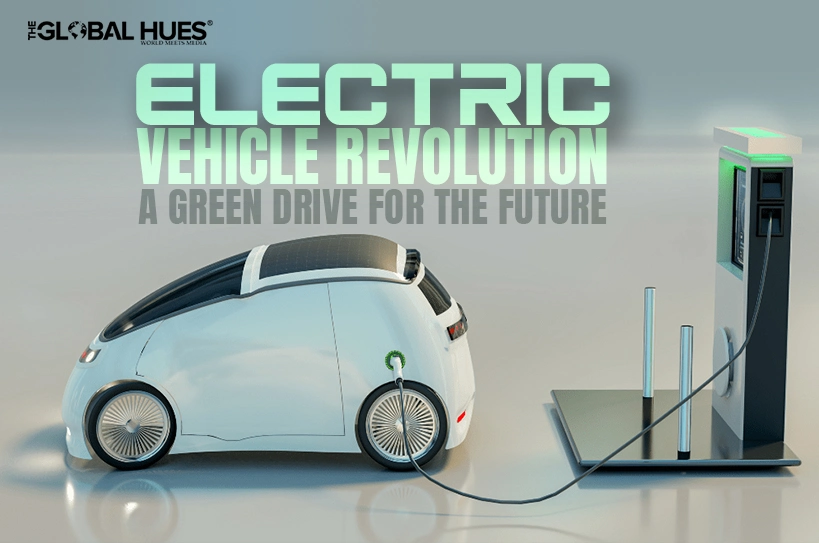The emergence of electric vehicles (EVs) is changing our known mode of mobility. EVs are advancing the battle against climate change with every new model on the road, therefore influencing a sustainable future that gives clean energy priority. However, this shift is about changing our perspective on infrastructure, energy use, and environmental effects.
In simple terms, petrol and diesel automobiles are extremely polluting and are rapidly being replaced with completely electric vehicles. The reason is that EVs generate no exhaust emissions. Also, they are significantly better for the environment.
The Rising Demand for Electric Vehicles
Many people are opting for electric vehicles. Thus, the sales of EVs are expected to continue to increase through 2024. Also, several nations—including the US—are moving forward to assist the EV revolution.
The core of electric cars is EV batteries, which define their range, efficiency, and even environmental effects. The limited range was one of the main obstacles EV acceptance faced historically. Recent developments in battery technology, however, are revolutionizing what is feasible and enabling cars to run longer on one charge, therefore making EVs a more practical choice for regular drivers.
Sustainable Energy and Battery Recycling
As EVs have grown, questions concerning battery disposal and the environmental effects of procuring lithium and cobalt have surfaced. The sector is reacting with creative recycling schemes that extract valuable resources from used batteries and lower the need for fresh mining activity. By storing renewable energy from sources like solar and wind, companies are investigating methods to rework EV batteries for energy storage solutions, therefore supporting sustainable energy systems.
Building a EV Charging Infrastructure for the Future
The building of a thorough and easily available charging infrastructure is essential for the electric car revolution. Unlike practically everywhere-present petrol stations, EV charging stations are continually developing their network to fulfill growing demand. Drivers must have easy access to either home, on-road, or office-based convenient charging solutions if EVs are to replace conventional cars completely.
Public Charging Networks
The concern of running out of energy on the road is one of the main obstacles for prospective EV buyers. Expanding their coverage helps public charging networks to meet this issue. Companies like Tesla, ChargePoint, and Electrify America are building additional fast-charging stations, particularly along important roads and highways, thereby enabling long-distance EV travel more practically.
Charging Opt, Quicker, Future-Proof
There are several charging stations; Level 1 is the slowest, and Level 3 (DC quick charging) offers the fastest choice. Essential for road trips and crowded cities, DC fast chargers can get an EV to 80% charge in around 30 minutes. The ultra-fast charging capability of emerging technologies might help to shorten charging durations to just minutes in the not-too-distant future. Beyond convenience, these developments in charging technologies are essential for everyone to be able to afford an electric vehicle.
Home Charging and Easy Solutions
Home charging changes everyday commuters’ experience. Most EV owners may completely recharge overnight by installing a Level 2 charger at home, therefore ensuring a full battery for convenient daily use. Smart home charging systems also let owners of electric vehicles manage charging periods, thus using reduced power bills during off-peak. Utilities are also looking at methods to enable smart grids as more electric vehicles (EVs) enter the market, may efficiently control energy consumption, and may even draw on EV batteries as backup supplies.
The Part EVs Play in Stopping Climate Change
Among the main causes of greenhouse gas emissions is transportation; fossil fuel-powered cars spew a lot of carbon dioxide (CO₂) into the atmosphere. Conversely, electric cars are a great weapon for lowering our carbon footprint as they emit no exhaust emissions. A necessary first step in slowing down climate change, a recent analysis by the International Energy Agency indicates that switching to electric vehicles might reduce world emissions by two gigatons yearly by 2030.
Electric Cars and Power
Renewable energy sources complement electric vehicles rather naturally. Even several charging stations today rely on renewable energy, so drivers may charge knowing they are utilizing sustainable energy. Moreover, EV owners may design their own environmentally beneficial energy cycle by combining solar panels or house batteries, therefore charging their vehicles with the least possible environmental effect.
Emission Reductions Beyond the Vehicle
Additionally, electric automobiles support reduced emissions during their whole lifetime. EVs usually require less maintenance and have fewer moving components than internal combustion engines. Therefore, the demand for spare parts and regular repairs is lowered.
Reducing Costs via Innovation
Manufacturing costs are progressively lowering as EV technologies develop. With novel materials and designs under investigation, battery manufacture—which makes up a large share of an EV’s cost—is getting more reasonably priced. The average cost of EV batteries is predicted to decrease below $100 per kilowatt-hour by 2025, therefore putting the cost of EVs more in line with those of conventional automobiles.
Worldwide Cooperation for a Future Sustainable Development
International cooperation is necessary if the EV revolution is to realize itself fully. To establish worldwide standards, invest in infrastructure, and promote research on sustainable solutions, governments, businesses, and societies all over must cooperate. This combined effort can guarantee that the change to electric vehicles is not just general but also quite effective in lowering greenhouse emissions and supporting sustainability.
Conclusion
From developments in EV battery technology to the growth of charging infrastructure and the integration of renewable energy sources, every step forward improves our road toward a better world. Even if obstacles still exist, the impetus is obvious: electric cars are here to stay, and their expansion has great potential to help create a sustainable planet and slow down global warming.
We get closer to a day when transportation is cleaner, more efficient, and better for our world as EV technology develops and more people embrace this green drive. Whether you now drive an electric vehicle or are thinking about switching, every decision adds to a more overall transforming effect.



